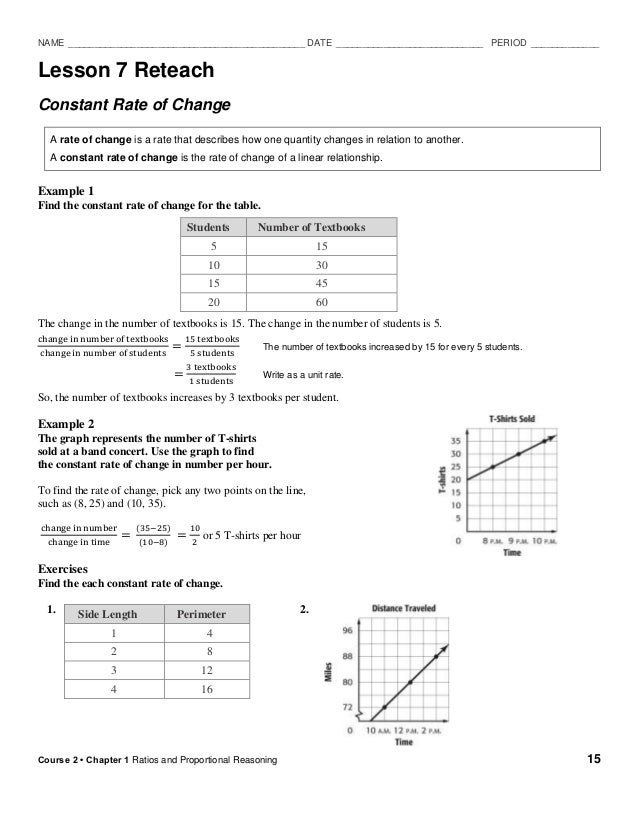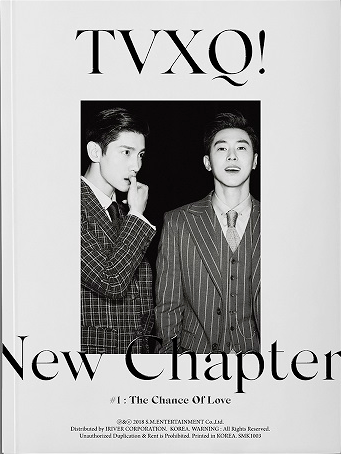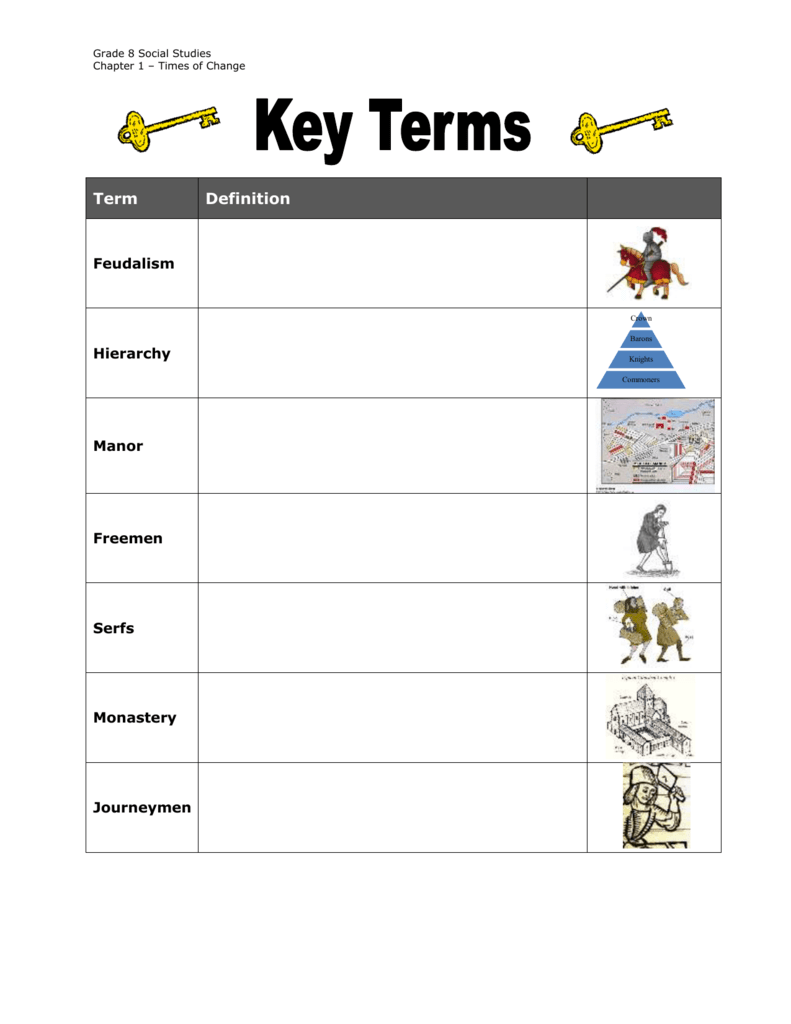1 Chapter 1 The Meaning of Progress Change is not progress. Mencken Suppose that all your objects in life were realized; that all the changes in institutions and opinions, which you are looking forward to, could be completely effected at this very instant; would this be a great joy and happiness to you? Happy reading Manhwa Change Wife Manhwa Chapter 1, don't forget to click the like and share button.Manhwa Change Wife Manhwa always updated on MANHWA TIME.Don't forget to read other manhwa updates. List of manhwa collections MANHWA TIME is on the Manhwa List menu.
- Chapter 1 Times Of Change
- Perpetual Change Chapter 1 5
- Chapter 1: Times Of Change Time
- Matter And Change Chapter 1
- Chapter 1: Times Of Change Summary
Social change, which entails large-scale alterations in ideological, technological, and economic systems within societies, has significant implications for adolescent development. For example, social change can affect the structure and dynamics of social contexts that adolescents experience on a daily basis such as family, school, and youth groups. Chapter 1 In chapter one, an interviewer comes to Dede Mirable's house to interview her. Then the story goes back in time, when the four Mirable sisters and their parents are at their front yard. Enrique Mirable, papa, predicting each of his daughters' fortunes. Chapter 1 Longitudinal Data Analysis 1.1 Introduction One of the most common medical research designs is a pre-post' study in which a single baseline health status measurement is obtained, an interven-tion is administered, and a single follow-up measurement is collected. In this experimental design the change in the outcome measurement can be as.
Summary
On a dark and stormy night, Meg Murry tosses and turns in her attic bedroom. She is unable to fall asleep because she is preoccupied with all that seems wrong in her life: she doesn't fit in at school; her high school teachers have just threatened to drop her down a grade on account of her poor academic performance; and worst of all, her father has been missing for many years and no one has heard from him. Meg hears her family's big black dog Fortinbras barking downstairs, and she begins to worry that a stranger may be skulking around the house; she suspects the tramp who, according to local gossip, recently stole twelve bed-sheets from the constable's wife, Mrs. Buncombe.
Dismissing her fears as silly and attempting to calm her nerves, Meg decides to make herself some cocoa in the kitchen. She is surprised to find her five-year-old brother Charles Wallace waiting for her at the kitchen table, though she notes that Charles always seems capable of reading her mind. Mrs. Murry soon joins her children, and tells Meg that she has received a call from Mrs. Henderson, the mother of the boy Meg had beaten up at school that day. Meg complains to her mother that she hates being an 'oddball' at school. She wishes she were more ordinary like her twin younger brothers, Sandy and Dennys. Mrs. Murry tells Meg that she needs to learn the meaning of moderation, the importance of finding a 'happy medium.' Charles then comments that he has spoken about Meg's problems with his friend Mrs. Whatsit, though he refuses to explain who this woman is.
As Charles Wallace is preparing sandwiches for his mother and sister, Fortinbras begins to bark loudly again. Mrs. Murry goes outside to find the cause of the commotion. She returns with Charles's mysterious friend Mrs. Whatsit, an eccentric tramp completely bundled up in wet clothes. Mrs. Whatsit explains that she glories in nights of such wild weather, but that tonight she has been blown off course in the storm. Charles asks her why she stole bed-sheets from Mrs. Buncombe, confirming Meg's suspicion that Mrs. Whatsit is the neighborhood tramp. After removing her boots and drying her feet, Mrs. Whatsit suddenly remarks that 'there is such a thing as a tesseract' and then hurries out the door. Mrs. Murry stands very still at the threshold, stunned by Mrs. Whatsit's parting words.
Commentary
This chapter introduces Meg Murry as an ordinary adolescent with many of the same problems facing most teenagers today: she desperately wants to fit in and to feel more comfortable in her identity. She feels like an outcast at school because she doesn't get along with the other students, who accuse her of acting immature. Part of her alienation results from the notoriety of her unusual family: her teachers tell her that they expect her to do better in her classes since both her parents are brilliant scientists; the boys at school make fun of her 'dumb baby brother' Charles Wallace, who did not begin to speak until the age of four. Finally, all the townspeople gossip about her absent father, implying that the Murry family should just face the facts and accept that he has left them. On top of it all, Meg feels deeply insecure about her personal appearance; compared to her beautiful mother, she describes herself as 'repulsive-looking' and wonders whether her social alienation is related to the physical unattractiveness she believes herself to possess. Thus Meg stands out for the very same reasons that make her so representative of most adolescents: awkward and insecure, she lacks confidence in her own abilities.
In contrast to the very typical Meg, Meg's younger brother Charles Wallace is highly extraordinary--indeed, almost supernatural. Not only does he strike the reader as highly precocious for a five-year-old--preparing liverwurst and cream cheese sandwiches, conversing freely with old ladies, and teaching himself new vocabulary words--Charles Wallace also displays an exceptional ability to read the minds of his mother and sister. Mrs. Whatsit, too, exhibits extrasensory powers: she can see the Russian caviar behind a closed cabinet door, and she can somehow sense Meg's distrust of her. These magical abilities introduce the emerging story as one of science fiction and fantasy.
The first chapter not only establishes the tone of the narrative, but foreshadows several important events that will take place over the course of the novel. The description of the moon in the first sentence alludes to the celestial battle between the shadowy Thing and the stars, witnessed by Meg and her fellow travelers in Chapter Four: 'Every few moments the moon ripped through [the clouds], creating wraithlike shadows that raced across the ground.' Meg's mother's remark that Meg needs to learn to find a 'happy medium' prefigures Meg's encounter with a creature by this name in Chapter Six. Finally, Mrs. Murry tells Meg that she just needs 'to plow through some more time' before things will get easier for her, which is indeed literally what Meg will do when she travels through a wrinkle in time.
Learning Objectives
- Understand the changes that accompany modernization.
- Discuss the functionalist and conflict perspectives on social change.
Social change refers to the transformation of culture, behavior, social institutions, and social structure over time. We are familiar from Chapter 5 “Social Structure and Social Interaction” with the basic types of society: hunting-and-gathering, horticultural and pastoral, agricultural, industrial, and postindustrial. In looking at all of these societies, we have seen how they differ in such dimensions as size, technology, economy, inequality, and gender roles. In short, we have seen some of the ways in which societies change over time. Another way of saying this is that we have seen some of the ways in which societies change as they become more modern. To understand social change, then, we need to begin to understand what it means for a society to become more modern. We considered this briefly in Chapter 5 “Social Structure and Social Interaction” and expand on it here.
Modernization
Modernization refers to the process and impact of becoming more modern. More specifically, it refers to the gradual shift from hunting-and-gathering societies to postmodern societies, as outlined in Chapter 5 “Social Structure and Social Interaction”, and perhaps especially to the changes brought by the Industrial Revolution of the 19th century.
The terms modern and modernization have positive connotations; it sounds good to modernize and to be modern. Modernization implies that progress has been made and is continuing to be made, and who would not want progress? Yet modernization also has a downside, as we will see in this section and in the later discussion of the environment.
A related problem with the terms and concepts of modern and modernization is that many people think of Western nations when considering the most modern nations in the world today. This implies that Western society is the ideal to which other societies should aspire. While there are many good things about Western societies, it is important to avoid the ethnocentrism of assuming that Western societies are better because they are more modern. In fact, one reason that many people in the Middle East and elsewhere dislike the United States is that they resent the “Westernization” of their societies from the influence of the United States and other wealthy Western nations. When they see Coca-Cola and Pepsi logos and the McDonald’s golden arches in their nations, they fear Western influence and the loss of their own beliefs and traditions.
These caveats notwithstanding, societies have become much more modern over time, to put it mildly. We thus cannot fully understand society and social life without appreciating how societies have changed as they have become more modern. Not surprisingly, sociologists have recognized the importance of modernization ever since the discipline of sociology began in the 19th century, and much of the work of sociology’s founders—Émile Durkheim, Max Weber, Karl Marx, and others—focused on how and why societies have changed as they became more modern.
We can draw on their efforts and related work by later sociologists and by anthropologists to develop an idea of the differences modernization has made for societies and individuals. Several dimensions and effects of modernization seem apparent (Nolan & Lenski, 2009).
First, as societies evolve, they become much larger and more heterogeneous. This means that people are more different from each other than when societies were much smaller, and it also means that they ordinarily cannot know each other nearly as well. Larger, more modern societies thus typically have weaker social bonds and a weaker sense of community than small societies and place more of an emphasis on the needs of the individual.
Chapter 1 Times Of Change
As societies become more modern, they begin to differ from nonmodern societies in several ways. In particular, they become larger and more heterogeneous, they lose their traditional ways of thinking, and they gain in individual freedom and autonomy.
Thomas Hawk – Big City Turn Me Loose and Set Me Free – CC BY-NC 2.0.
We can begin to appreciate the differences between smaller and larger societies when we contrast a small college of 1,200 students with a large university of 40,000 students. Perhaps you had this contrast in mind when you were applying to college and had a preference for either a small or a large institution. In a small college, classes might average no more than 20 students; these students get to know each other well and often have a lot of interaction with the professor. In a large university, classes might hold 600 students or more, and everything is more impersonal. Large universities do have many advantages, but they probably do not have as strong a sense of community as is found at small colleges.
A second aspect of modernization is a loss of traditional ways of thinking. This allows a society to be more creative and to abandon old ways that may no longer be appropriate. However, it also means a weakening or even ending of the traditions that helped define the society and gave it a sense of identity.
A third aspect of modernization is the growth of individual freedom and autonomy. As societies grow, become more impersonal, and lose their traditions and sense of community, their norms become weaker, and individuals thus become freer to think for themselves and to behave in new ways. Although most of us would applaud this growth in individual freedom, it also means, as Émile Durkheim (1895/1962) recognized long ago, that people feel freer to deviate from society’s norms and thus to commit deviance. If we want a society that values individual freedom, Durkheim said, we automatically must have a society with deviance.
Is modernization good or bad? This is a simplistic question about a very complex concept, but a quick answer is that it is both good and bad. We see evidence for both responses in the views of sociologists Ferdinand Tönnies, Weber, and Durkheim. As Chapter 5 “Social Structure and Social Interaction” discussed, Tönnies (1887/1963) said that modernization meant a shift from Gemeinschaft (small societies with strong social bonds) to Gesellschaft (large societies with weaker social bonds and more impersonal social relations). Tönnies lamented the loss of close social bonds and of a strong sense of community resulting from modernization, and he feared that a sense of rootlessness begins to replace the feeling of stability and steadiness characteristic of small, older societies.


Weber (1921/1978) was also concerned about modernization. The hallmarks of modernization, he thought, are rationalization, a loss of tradition, and the rise of impersonal bureaucracy. He despaired over the impersonal quality of rational thinking and bureaucratization, as he thought it was a dehumanizing influence.
Durkheim (1893/1933) took a less negative view of modernization. He certainly appreciated the social bonds and community feeling, which he called mechanical solidarity, characteristic of small, traditional societies. However, he also thought that these societies stifled individual freedom and that social solidarity still exists in modern societies. This solidarity, which he termed organic solidarity, stems from the division of labor, in which everyone has to depend on everyone else to perform their jobs. This interdependence of roles, Durkheim said, creates a solidarity that retains much of the bonding and sense of community found in premodern societies.
We have already commented on important benefits of modernization that are generally recognized: modernization promotes creativity and individual freedom and autonomy. These developments in turn usually mean that a society becomes more tolerant of beliefs and behaviors that it formerly would have disapproved and even condemned. Modern societies, then, generally feature more tolerance than older societies. Many people, undoubtedly including most sociologists, regard greater tolerance as a good thing, but others regard it as a bad thing because they favor traditional beliefs and behaviors.
Perpetual Change Chapter 1 5
Beyond these abstract concepts of social bonding, sense of community, and tolerance, modern societies are certainly a force for both good and bad in other ways. They have produced scientific discoveries that have saved lives, extended life spans, and made human existence much easier than imaginable in the distant past and even in the recent past. But they have also polluted the environment, engaged in wars that have killed tens of millions, and built up nuclear arsenals that, even with the end of the Cold War, still threaten the planet. Modernization, then, is a double-edged sword. It has given us benefits too numerous to count, but it also has made human existence very precarious.
Sociological Perspectives on Social Change
Sociological perspectives on social change fall into the functionalist and conflict approaches. As usual, both views together offer a more complete understanding of social change than either view by itself (Vago, 2004). Table 20.1 “Theory Snapshot” summarizes their major assumptions.

Table 20.1 Theory Snapshot
| Theoretical perspective | Major assumptions |
|---|---|
| Functionalism | Society is in a natural state of equilibrium. Gradual change is necessary and desirable and typically stems from such things as population growth, technological advances, and interaction with other societies that brings new ways of thinking and acting. However, sudden social change is undesirable because it disrupts this equilibrium. To prevent this from happening, other parts of society must make appropriate adjustments if one part of society sees too sudden a change. |
| Conflict theory | Because the status quo is characterized by social inequality and other problems, sudden social change in the form of protest or revolution is both desirable and necessary to reduce or eliminate social inequality and to address other social ills. |
The Functionalist Understanding

The functionalist understanding of social change is based on insights developed by different generations of sociologists. Early sociologists likened change in society to change in biological organisms. Taking a cue from the work of Charles Darwin, they said that societies evolved just as organisms do, from tiny, simple forms to much larger and more complex structures. When societies are small and simple, there are few roles to perform, and just about everyone can perform all of these roles. As societies grow and evolve, many new roles develop, and not everyone has the time or skill to perform every role. People thus start to specialize their roles and a division of labor begins. As noted earlier, sociologists such as Durkheim and Tönnies disputed the implications of this process for social bonding and a sense of community, and this basic debate continues today.
Several decades ago, Talcott Parsons (1966), the leading 20th-century figure in functionalist theory, presented an equilibrium model of social change. Parsons said that society is always in a natural state of equilibrium, defined as a state of equal balance among opposing forces. Gradual change is both necessary and desirable and typically stems from such things as population growth, technological advances, and interaction with other societies that brings new ways of thinking and acting. However, any sudden social change disrupts this equilibrium. To prevent this from happening, other parts of society must make appropriate adjustments if one part of society sees too sudden a change.
Functionalist theory assumes that sudden social change, as by the protest depicted here, is highly undesirable, whereas conflict theory assumes that sudden social change may be needed to correct inequality and other deficiencies in the status quo.
The functionalist perspective has been criticized on a few grounds. The perspective generally assumes that the change from simple to complex societies has been very positive, when in fact, as we have seen, this change has also proven costly in many ways. It might well have weakened social bonds, and it has certainly imperiled human existence. Functionalist theory also assumes that sudden social change is highly undesirable, when such change may in fact be needed to correct inequality and other deficiencies in the status quo.
Conflict Theory
Whereas functional theory assumes the status quo is generally good and sudden social change is undesirable, conflict theory assumes the status quo is generally bad. It thus views sudden social change in the form of protest or revolution as both desirable and necessary to reduce or eliminate social inequality and to address other social ills. Another difference between the two approaches concerns industrialization, which functional theory views as a positive development that helped make modern society possible. In contrast, conflict theory, following the views of Karl Marx, says that industrialization exploited workers and thus increased social inequality.
In one other difference between the two approaches, functionalist sociologists view social change as the result of certain natural forces, which we will discuss shortly. In this sense, social change is unplanned even though it happens anyway. Conflict theorists, however, recognize that social change often stems from efforts by social movements to bring about fundamental changes in the social, economic, and political systems. In his sense social change is more “planned,” or at least intended, than functional theory acknowledges.
Critics of conflict theory say that it exaggerates the extent of social inequality and that it sometimes overemphasizes economic conflict while neglecting conflict rooted in race/ethnicity, gender, religion, and other sources. Its Marxian version also erred in predicting that capitalist societies would inevitably undergo a socialist-communist revolution.
Key Takeaways
- As societies become more modern, they become larger and more heterogeneous. Traditional ways of thinking decline, and individual freedom and autonomy increase.
- Functionalist theory favors slow, incremental social change, while conflict theory favors fast, far-reaching social change to correct what it views as social inequalities and other problems in the status quo.
For Your Review
- If you had to do it over again, would you go to a large university, a small college, or something in between? Why? How does your response relate to some of the differences between smaller, traditional societies and larger, modern societies?
- When you think about today’s society and social change, do you favor the functionalist or conflict view on the kind of social change that is needed? Explain your answer.
Chapter 1: Times Of Change Time
References
Durkheim, É. (1933). The division of labor in society. London, England: The Free Press. (Original work published 1893).
Durkheim, É. (1962). The rules of sociological method (S. Lukes, Ed.). New York, NY: Free Press. (Original work published 1895).
Nolan, P., & Lenski, G. (2009). Human societies: An introduction to macrosociology (11th ed.). Boulder, CO: Paradigm.
Parsons, T. (1966). Societies: Evolutionary and comparative perspectives. Englewood Cliffs, NJ: Prentice Hall.
Tönnies, F. (1963). Community and society. New York, NY: Harper and Row. (Original work published 1887).
Matter And Change Chapter 1
Vago, S. (2004). Social change (5th ed.). Upper Saddle River, NJ: Prentice Hall.
Chapter 1: Times Of Change Summary
Weber, M. (1978). Economy and society: An outline of interpretive sociology (G. Roth & C. Wittich, Eds.). Berkeley: University of California Press. (Original work published 1921).
